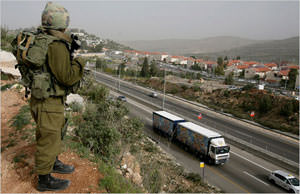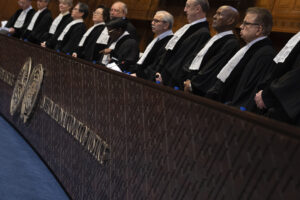You Take the High, Palestinians Take the Low
An interim decision by the Israeli Supreme Court on Wednesday marked the beginning of what could become a two-tiered road system in the West Bank. With two separate legal systems for Palestinians and Israelis already in operation, critics fear segregated roads would lead toward further institutionalization of apartheid in the occupied territories.
An interim decision by the Israeli Supreme Court on Wednesday marked the beginning of what could become a two-tiered road system in the West Bank. With two separate legal systems for Palestinians and Israelis already in operation, critics fear segregated roads would lead toward further institutionalization of apartheid in the occupied territories.
Your support matters…The New York Times:
BEIT SIRA, West Bank — Ali Abu Safia, mayor of this Palestinian village, steers his car up one potholed road, then another, finding each exit blocked by huge concrete chunks placed there by the Israeli Army. On a sleek highway 100 yards away, Israeli cars whiz by.
“They took our land to build this road, and now we can’t even use it,” Mr. Abu Safia says bitterly, pointing to the highway with one hand as he drives with the other. “Israel says it is because of security. But it’s politics.”
The object of Mr. Abu Safia’s contempt — Highway 443, a major access road to Jerusalem — has taken on special significance in the grinding Israeli-Palestinian conflict. For the first time, the Supreme Court, albeit in an interim decision, has accepted the idea of separate roads for Palestinians in the occupied areas.
The Association for Civil Rights in Israel told the Supreme Court that what was happening on the highway could be the onset of legal apartheid in the West Bank — a charge that makes many Israelis recoil.
Independent journalism is under threat and overshadowed by heavily funded mainstream media.
You can help level the playing field. Become a member.
Your tax-deductible contribution keeps us digging beneath the headlines to give you thought-provoking, investigative reporting and analysis that unearths what's really happening- without compromise.
Give today to support our courageous, independent journalists.






You need to be a supporter to comment.
There are currently no responses to this article.
Be the first to respond.